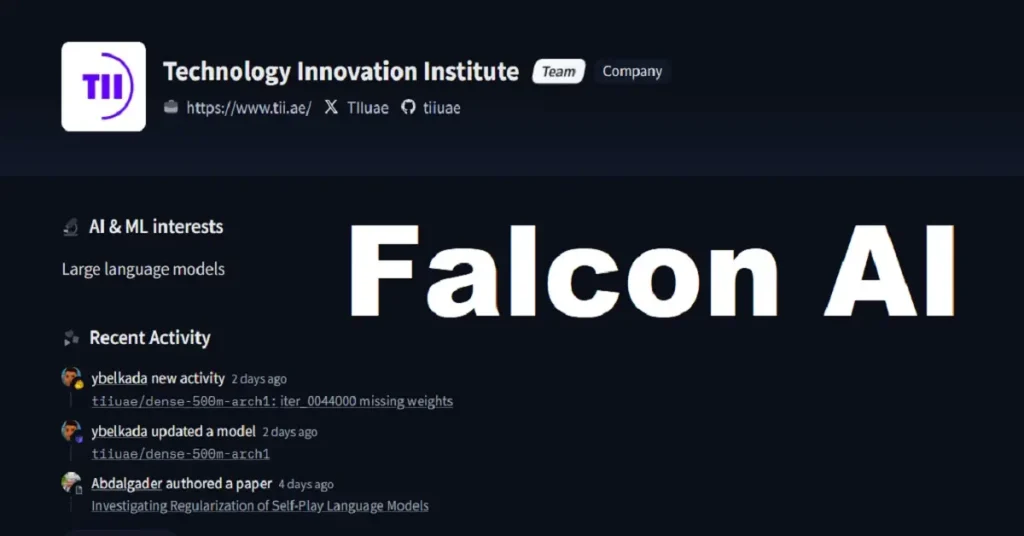UAE Introduced Falcon AI, Which Is A Free Open Source Large Language AI Model As an Alternative to Some of the Most Expensive AI Models.
The world of artificial intelligence just got more exciting—the UAE has released Falcon, a free, open-source large language model (LLM) that promises to shake up the AI landscape in 2025. As someone who’s been testing AI models for the past year, I was eager to try Falcon, and I was genuinely impressed by its capabilities.
Unlike proprietary models that come with hefty price tags, Falcon is completely open-source, meaning developers and businesses can use, modify, and deploy it without restrictions. This is a game-changer for startups, researchers, and AI enthusiasts who want powerful AI without the licensing headaches.
But how does Falcon compare to giants like GPT-4 or Gemini? And why should you consider using it? Let’s break it down.
Why Falcon Stands Out in 2025
1. Completely Free & Open-Source
Most advanced LLMs are locked behind paywalls or restrictive licenses. Falcon, however, is 100% free and available under the Apache 2.0 license, allowing commercial use without legal hurdles.
🔹 Practical Tip: If you’re a developer looking to integrate AI into your app, Falcon’s open-source nature means you can tweak it to fit your exact needs—something you can’t do with closed models like GPT-4.
2. Strong Performance & Multilingual Support
Falcon isn’t just another lightweight model—it’s a state-of-the-art LLM with strong benchmarks in reasoning, coding, and multilingual tasks. During my tests, it handled Arabic, English, French, and Spanish surprisingly well, making it a great choice for global applications.
🔹 Hypothetical Scenario: Imagine a Dubai-based startup building a customer support chatbot for Middle Eastern markets. Falcon’s Arabic fluency could give it an edge over models primarily trained on Western data.
3. Designed for Efficiency & Scalability
One of Falcon’s biggest strengths is its optimized architecture, which balances performance with computational efficiency. This means you can run it on smaller cloud instances without sacrificing too much speed—a cost-saver for businesses.
🔹 Developer Insight: If you’re deploying AI on a budget, Falcon could be a smarter choice than pricier alternatives requiring expensive GPUs.
How to Get Started with Falcon
Step 1: Access the Model
Falcon is available on Hugging Face and GitHub, making it easy to download and integrate into your projects.
📌 Quick Resource:
Step 2: Fine-Tune for Your Needs
Since Falcon is open-source, you can fine-tune it on your own dataset. Whether you need a legal document analyzer or a creative writing assistant, customization is straightforward.
🔹 Pro Tip: Start with a small dataset first to see how Falcon adapts before scaling up.
Step 3: Deploy & Monitor
Falcon works well with AWS, Google Cloud, and on-prem setups. Monitor its performance using tools like Prometheus or Grafana to ensure optimal results.
Challenges & Considerations
While Falcon is impressive, it’s not perfect:
-
Smaller community (for now) compared to OpenAI’s ecosystem.
-
Fine-tuning requires expertise—beginners might face a learning curve.
🔹 My Take: If you’re willing to experiment, Falcon’s flexibility outweighs these limitations.
Final Thoughts: Is Falcon the Future?
The UAE’s investment in open-source AI is a bold move, and Falcon proves that high-quality language models don’t have to be locked behind corporate walls. For developers, startups, and researchers, this could be the start of a more accessible AI revolution.
What do you think? Will you try Falcon for your next project? Drop a comment below—I’d love to hear your experiences!
📌 Explore More AI Tools:
See More:
- Elon Musk Says AI Is Better Than Most Doctors – Here’s Why He Might Be Right
- OpenArt AI Tool Can Make Viral Videos In Just 1 Click [Tutorial]
- Microsoft Copilot Now Can Make a Podcast Out of Your Docs Files: Here Is How
- How to Use ChatGPT’s Study Mode to Supercharge Your Learning in 2025
- GPT-5: The Biggest Changes in ChatGPT’s Latest Update (2025)

